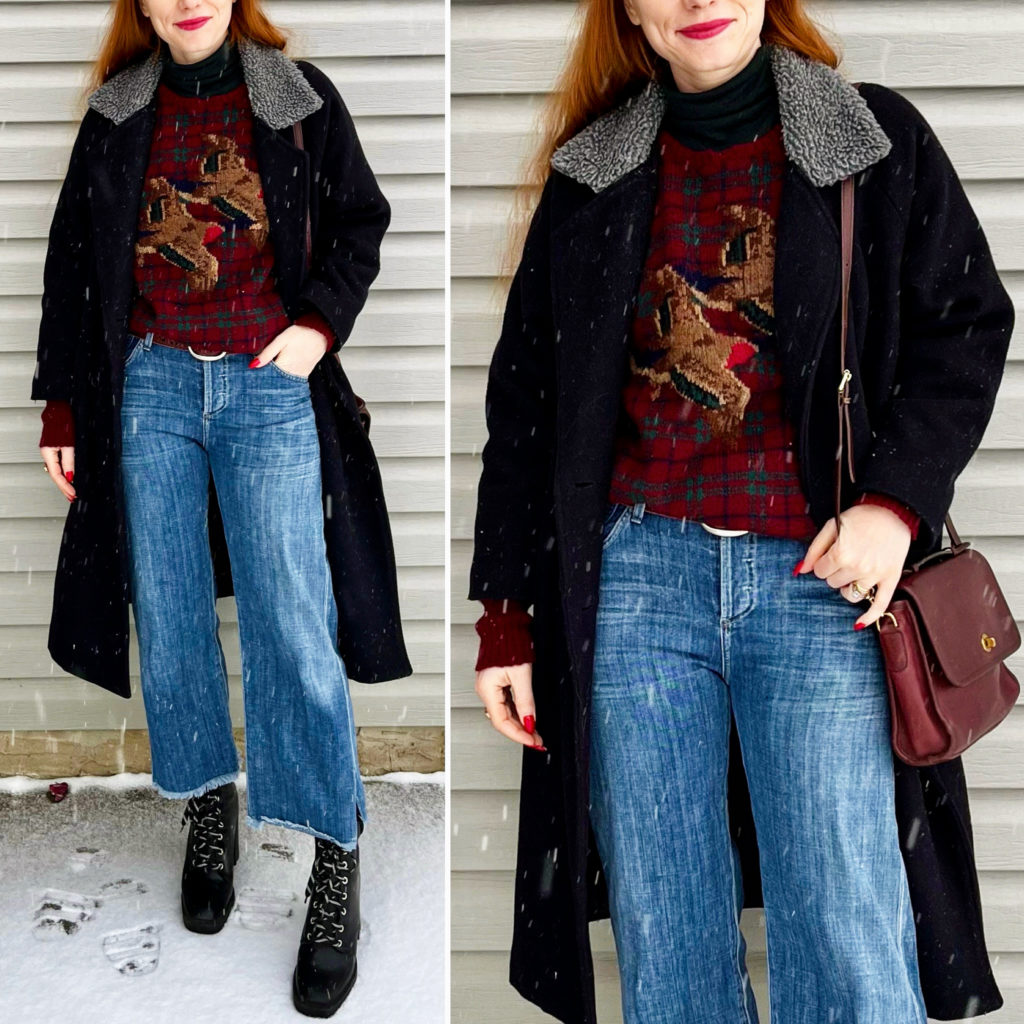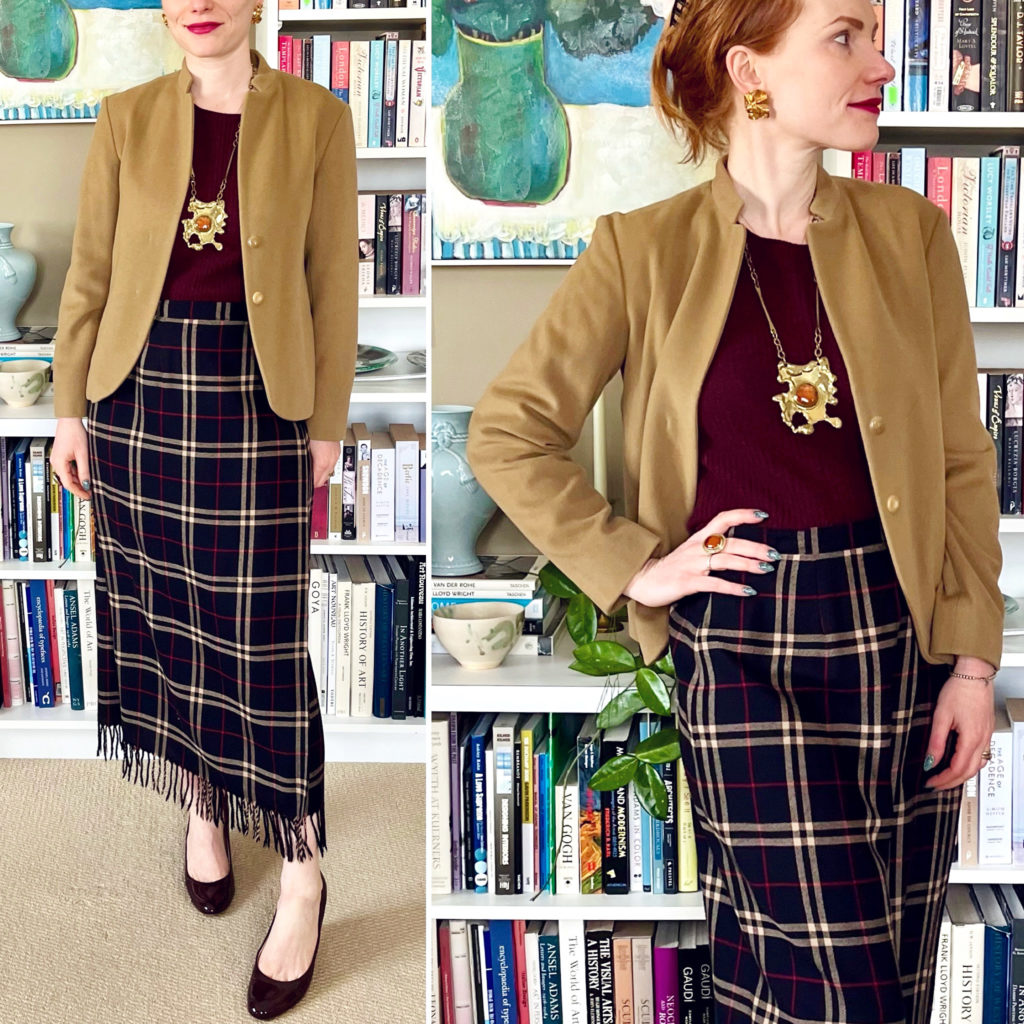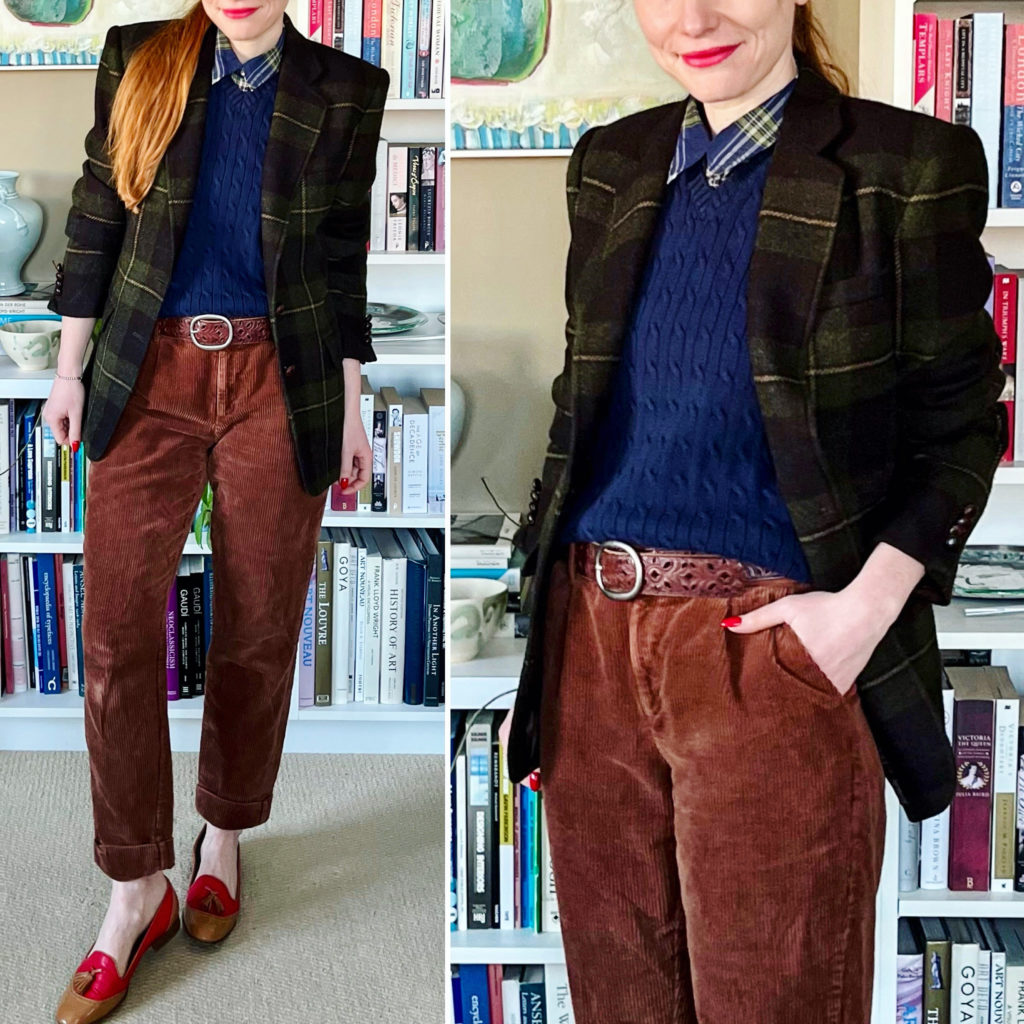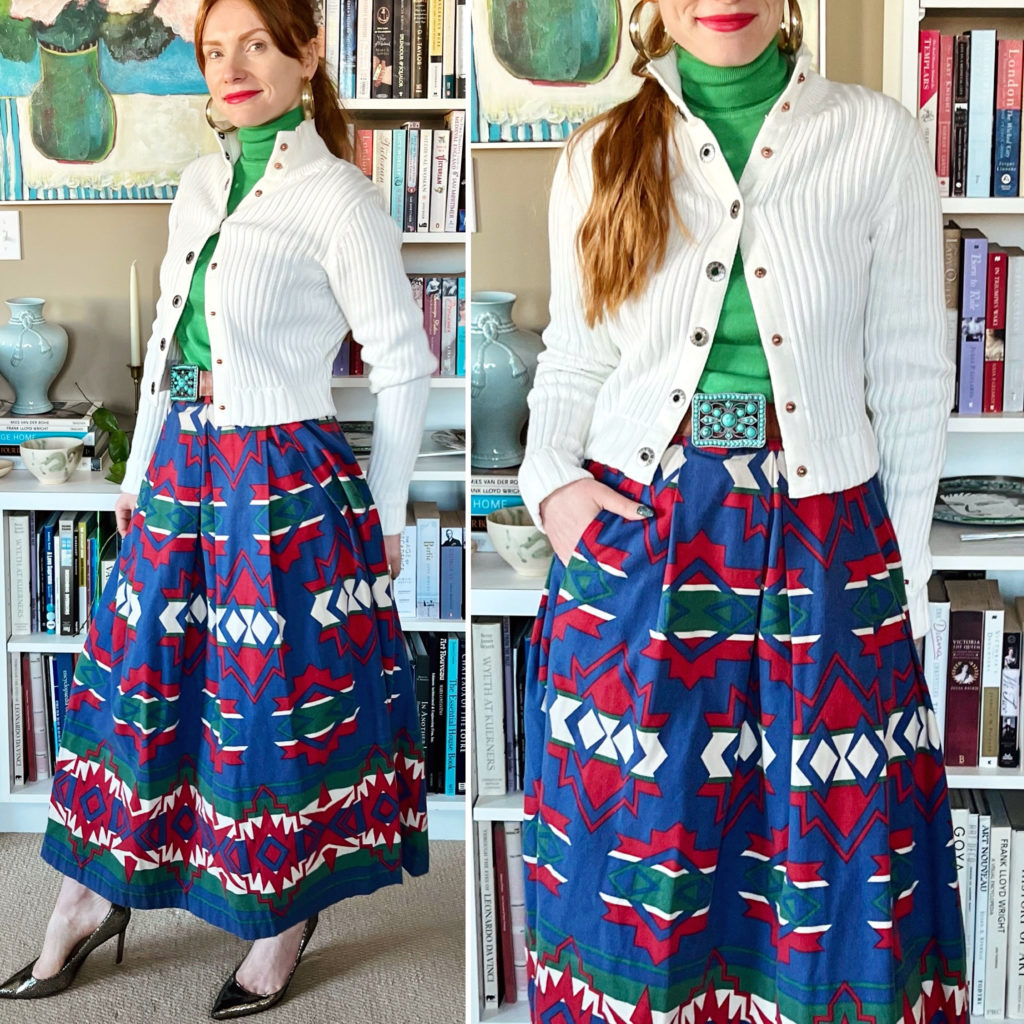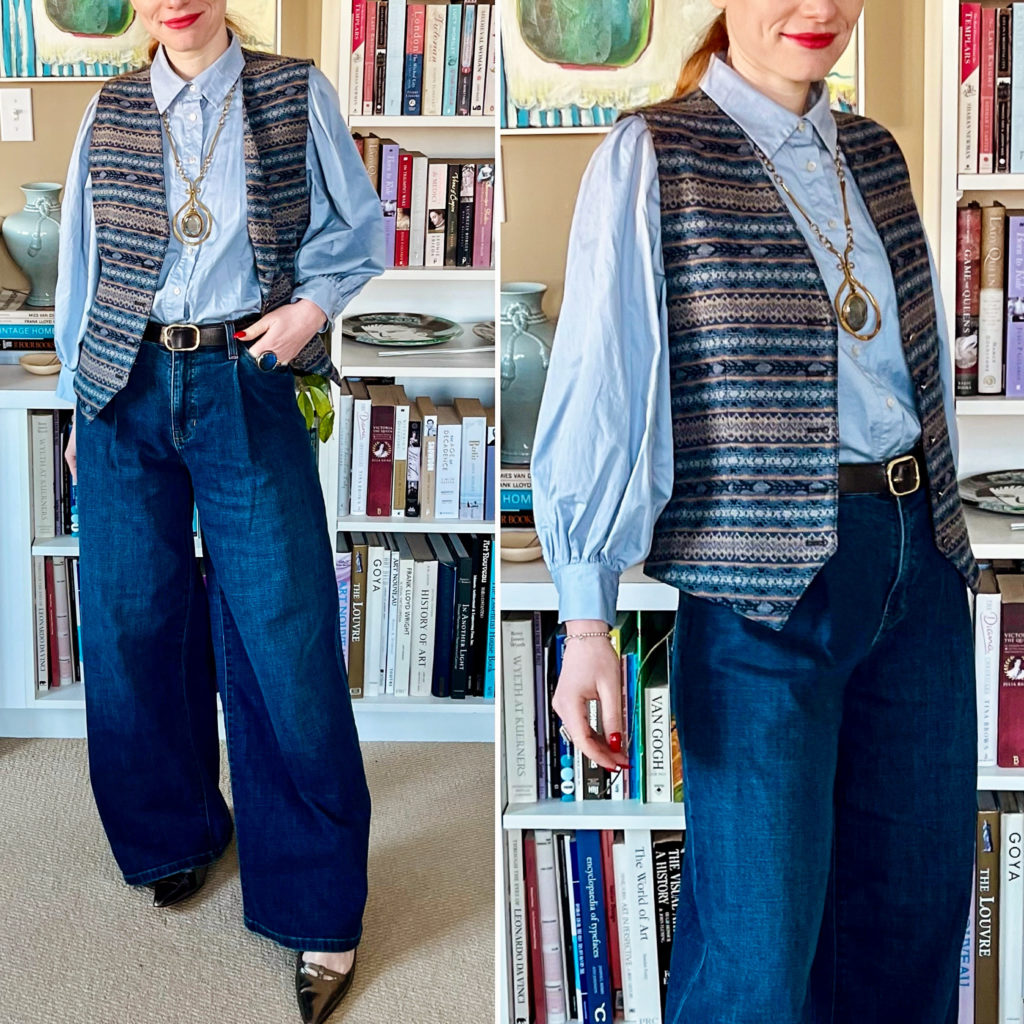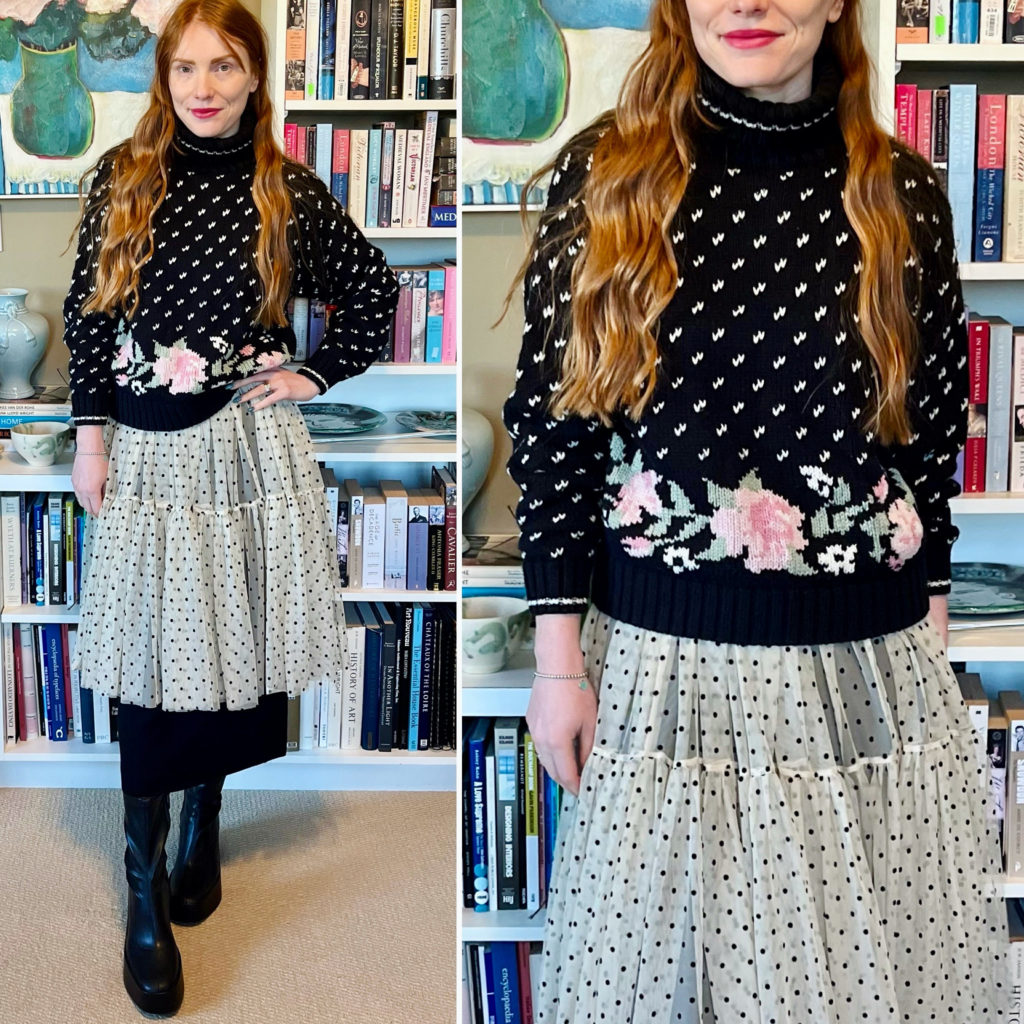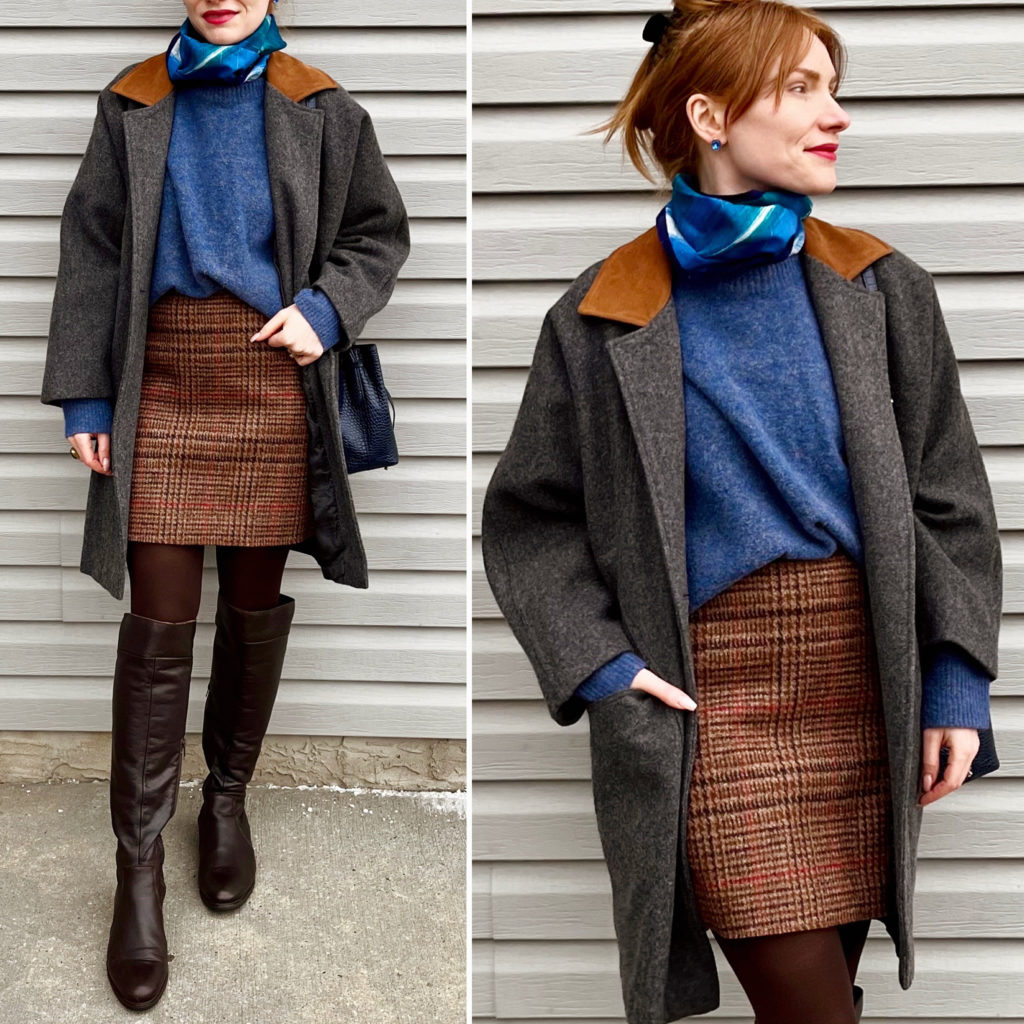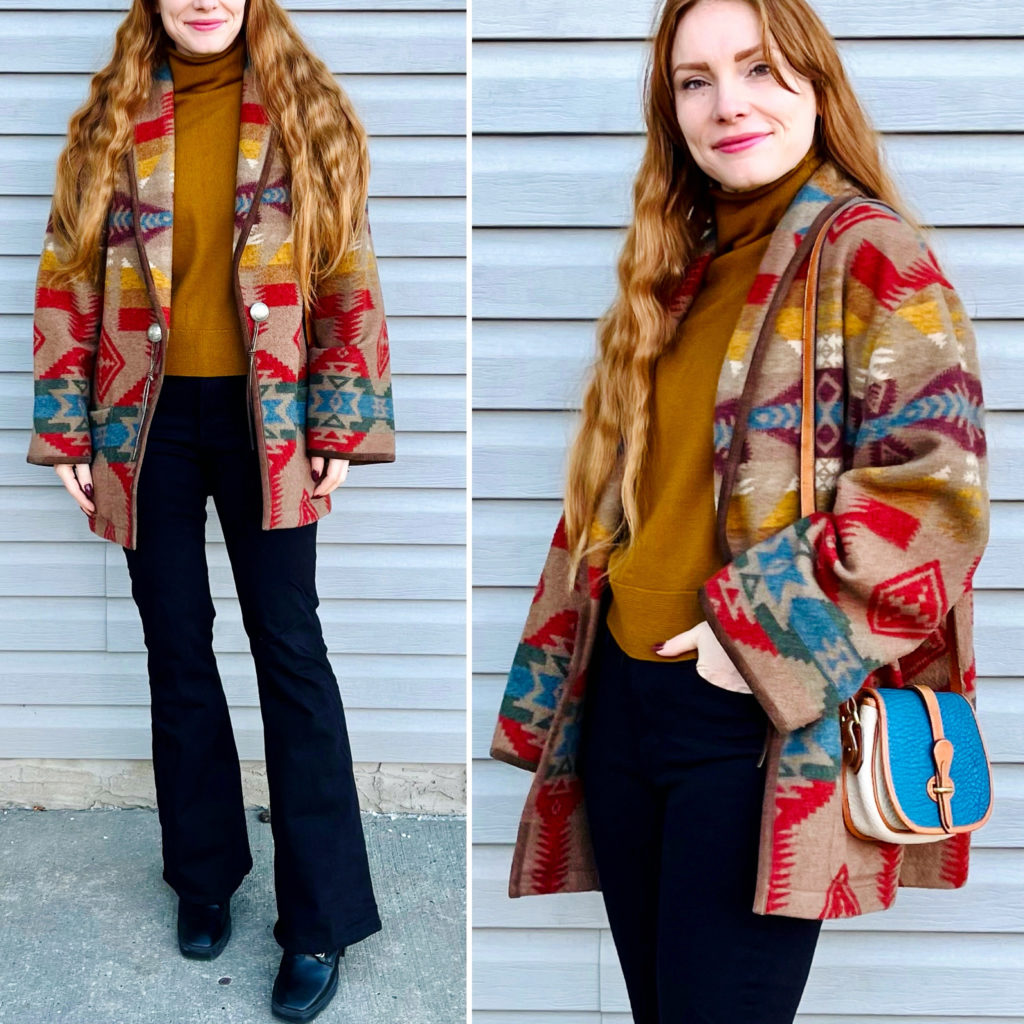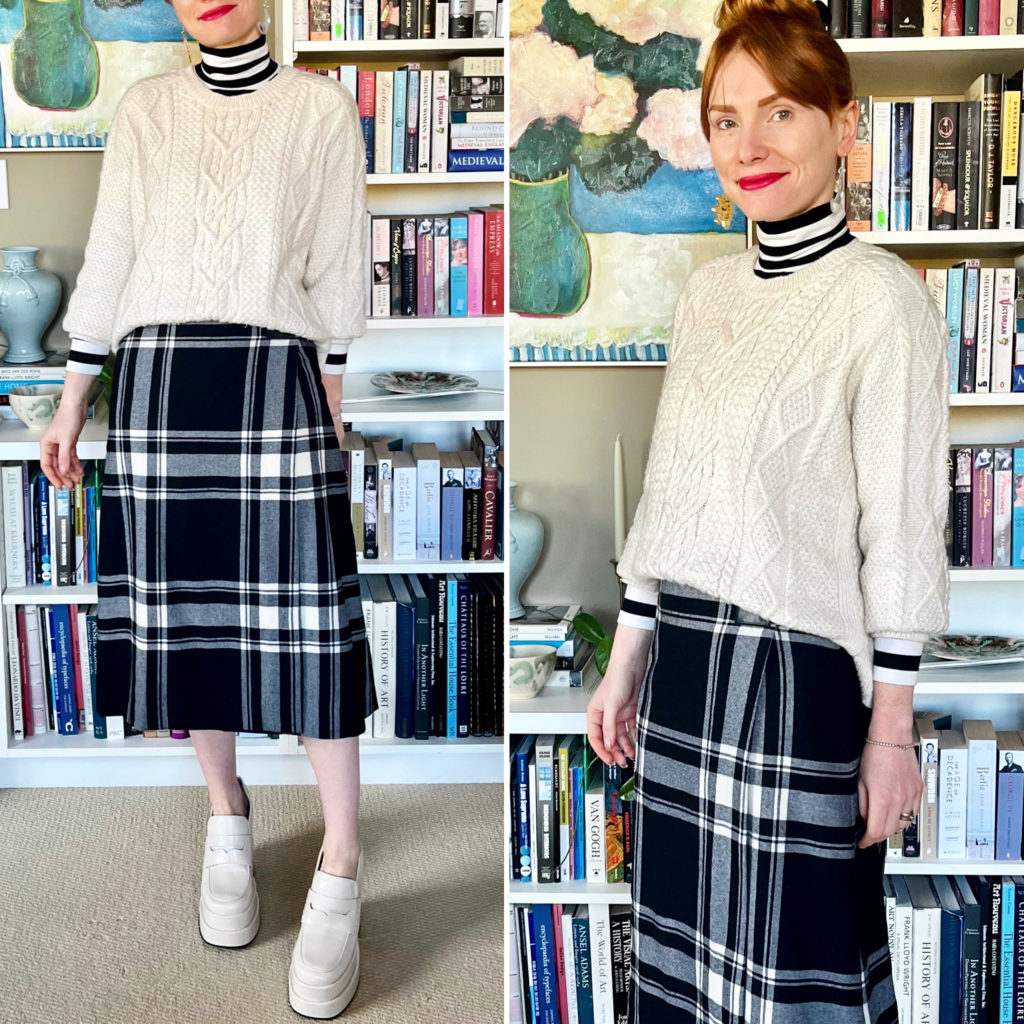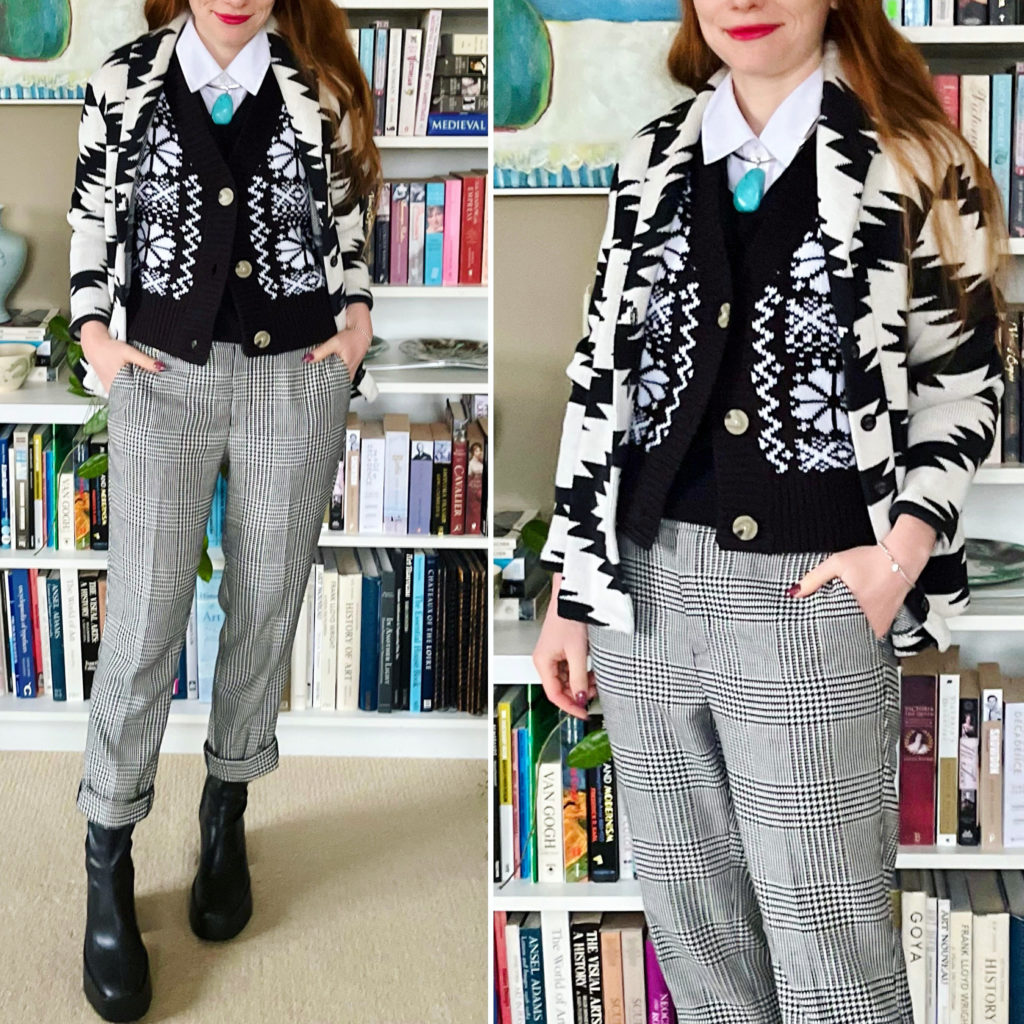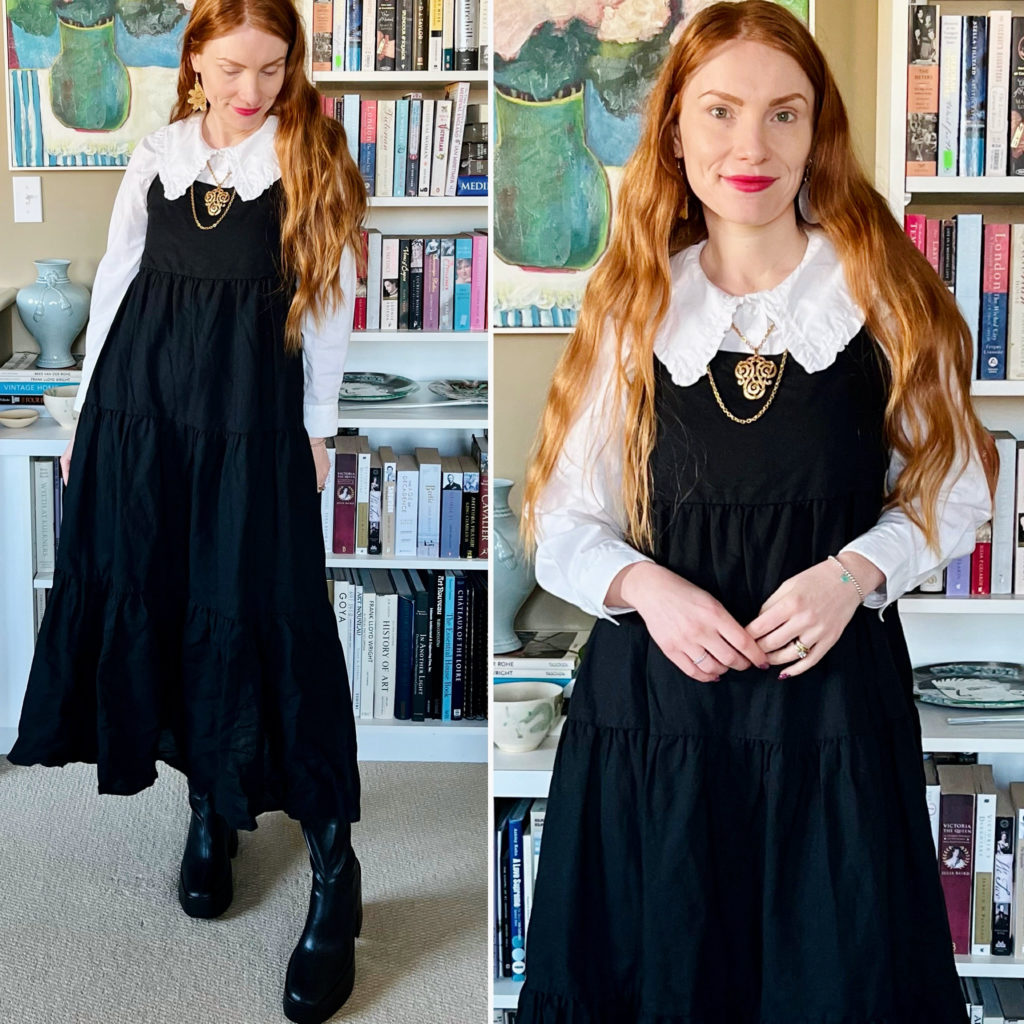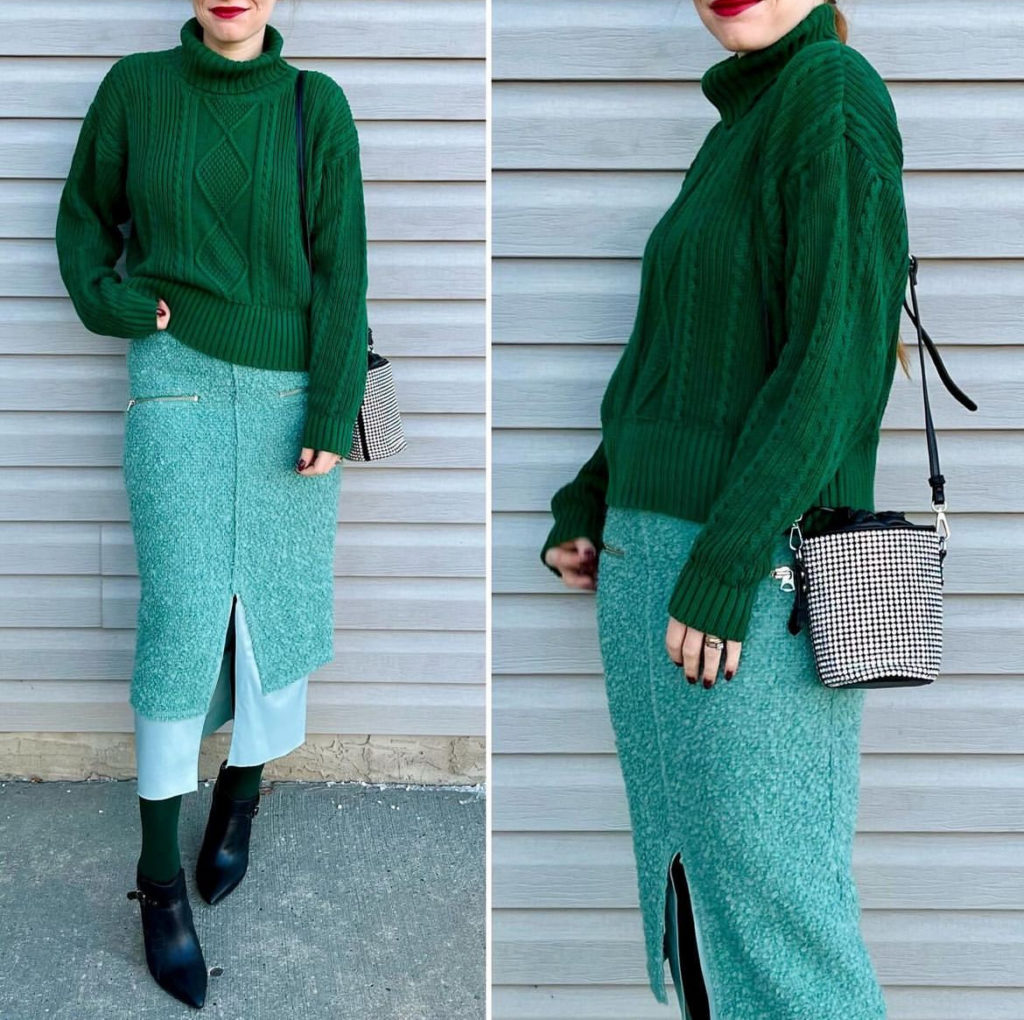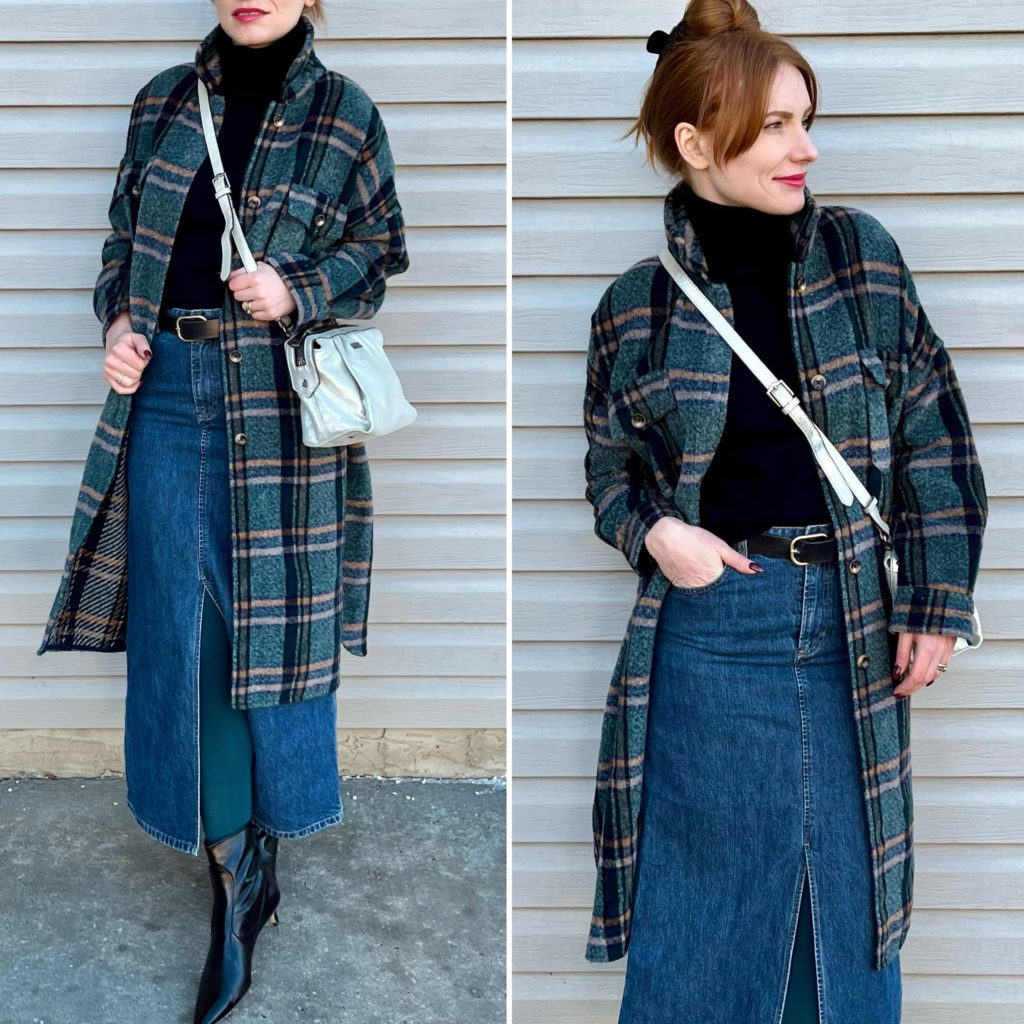Editor note: This is a guest post from my best friend, Jenni. A (self-described) policy nerd currently pursuing study at McGill University in Montreal, she is also an intrepid traveler and fellow thrifter, two hobbies that inspired this post.
Did you know that, in North America, an estimated 13 million tons of textile waste is created each year? Some of that ends up in landfills, some of it in thrift stores. Repurposing discarded items through thrifting is an eco-conscious solution, contributing to waste reduction, a smaller carbon footprint, and the continuation of a circular economy. Nevertheless, the fate of thrifted goods once they outlive their usefulness in the thrift store raises questions. Thrift stores only sell about 10% of the donations they receive.
Have you ever wondered what happens to unwanted items after that? What does life after the thrift store look like?
Various fates await these goods. If we focus on clothing specifically, unsold items can end up being sent to landfills – which means their donation to thrift stores was only a temporary diversion – transformed into scraps or recycled into new textiles, or shipped to be sold overseas. A recent trip to Morocco shed new light on the latter outcome, and made me reconsider a lot of things.
As a seasoned traveler with a deep passion for thrifting – credit goes to my best friend, who introduced me to this hobby years ago – I’ve explored secondhand markets in various corners of the world, from Kenya and Uganda to Ghana and Cambodia. My experience in Morocco bears striking similarities to what I saw in those other locations. My general observations of thrift markets in these countries indicate a widespread presence of secondhand goods. I have consistently come across thrift markets during my travels, and I’ve noticed varying types of sellers depending on the country. In Eastern Africa, for instance, it appeared that there were many small, individual shops focused on specific items such as ladies’ dresses or mens’ pants. In most countries, though, I found large format markets selling secondhand consumable goods purchased through overseas trade.
Tiflet is a small town in Morocco with a population of around 80,000, about one hour away from the capital city of Rabat. It is small, semi-prosperous but not overly important and definitely not a tourist destination. Every night in Tiflet, there is a sellers’ market. The market is located in the downtown area and offers everything from custom-made new clothing, to fresh produce, to household cleaning products and everything in between. It’s a vast array of sights, sounds, and smells, full of families and commerce. It’s loud and overwhelming, but also charming; it’s one of my favourite places to visit and participate in when I travel to Morocco.
As an avid thrifter, my favourite section of the market is where secondhand goods are sold. These items are not marketed as new to Moroccan consumers, but as overseas secondhand or recycled items. It is not a particularly large area, but it is usually covered in tarps and has basic lighting. Inside, there are around 8-10 tables where the secondhand clothing is displayed. Other secondhand items, such as household goods, are usually sold in front of the tents, laid out on the ground and organized according to their purpose — electronics, storage items, or other accoutrements bundled together. The clothing is also usually divided into some basic, and often pretty loose, categories: women, men, children, babies, pajamas, sometimes outwear (though not all the time).
On my most recent visit to Tiflet, there were 3 tables for women’s clothing, 3 tables for men’s clothing, 2 tables each for babies and children, and one table for pajamas. In the past, I have seen larger sections, sometimes with a full tent for each category. In other countries, I have seen large areas for just women’s clothing, where items were separated into categories such as tops, bottoms, skirts, or pants.
What is in these piles and piles of clothes?
Basically, everything that wasn’t sold at thrift stores in the Global North. My friends in Morocco told me that the vendors at their market claim that they buy items from the United Kingdom, which makes sense from a shipping / location point of view. While I have no reason to doubt their statements, as I was looking through the piles of clothing at the Tiflet market, I couldn’t see much that would help to identify where the clothing originated. It could just as easily have been Canada or the U.S. as the U.K. or other parts of Europe. I have never looked into the logistics of buying large freight containers of secondhand clothing for sale in overseas markets like Morocco and other African countries, so it’s possible that certain locations get more goods from, say, Europe than the U.S. and vice versa.
The piles I ended up looking through contained women’s clothing, which came in various sizes, styles and conditions. The experience was very reminiscent of thrifting at the Goodwill “bins” back home in Canada, which are, essentially, the thrift version of outlet shopping. Everything that doesn’t sell in a regular Goodwill store will end up at the “bins” before it goes to the landfill or to an overseas market such as the one I visited. The “bins” are totally different from regular thrifting: a wild mish-mash of different clothing (and sometimes other types of) items, which require you to dig through everything if you want to have any chance of finding something worthwhile. The same was true at the Tiflet market. I was surprised, though, that there were a lot more “good” items than I was expecting – good being a relative word. I was expecting primarily no-name or generic brand name clothing, but there was a surprising amount of “nicer” fast fashion such as H&M, Zara, etc. I even saw more than one pair of 7 for All Mankind jeans! There was also a lot of de-tagged clothing that was in good or adequate condition, especially knit sweaters, as well as a lot of vintage items which I could tell were good quality even though I didn’t have an inkling as to the designers.
Speaking of vintage, there was one thing in particular that caught my eye on this particular night: a mint condition Gap “The Holiday is Here” chunky turtleneck sweater. Even from a distance, across piles and piles of clothes, I could see that this sweater was amazing and in perfect condition. The thrift gods must have been smiling on me because it was also my size. You have probably heard Adina rave about her love of pre-2008 Gap, including her obsession with their striped holiday sweaters. Well, I get it now too; I love mine so much and cannot wait to wear it! Here is an article about it.
Speaking more generally, here are some of my observations based on my visits not only to the Tiflet secondhand market, but also similar markets in other countries. The quality of most of the clothes was adequate, but there were a lot of synthetic fabrics, such as polyester and nylon, which would not be great for the desert climate of Morocco. Such fabrics are typically not as breathable as natural fibers like cotton or linen. In hot, dry climates, breathability is crucial – fabrics should allow sweat to evaporate from the skin, thus helping to cool the body. Simply put, cheap fast fashion synthetics are not conducive to this cooling, which means a lot of the clothing that ends up in countries like Morocco cannot be used by the local population.
In Tiflet, I saw some items with a lot of wear, including things such as shrunken wool sweaters that were felted into oblivion. I am not sure that many Moroccan consumers would have the knowledge or resources to unshrink a wool sweater, or much desire to put in the time required to do so. Illiteracy and/or unfamiliarity with English also hampers some Moroccan consumers’ capacity to comprehend washing instructions, especially for delicate fabrics like wools or natural fibers. Understanding how to care for such materials is essential for maintaining the longevity and quality of clothing. Not being able to read care labels can lead to improper washing and care practices, potentially diminishing the value and lifespan of secondhand items.
Illiteracy is a challenge in other ways as well. Women often serve as the primary clothing buyers for many Moroccan families, and the illiteracy rate for women in Morocco can be as high as 45% in some areas. Lack of literacy can make it difficult for buyers to discern between “better” and “lesser” brands in the context of North American or other foreign labels. Without the ability to identify reputable brands, these buyers may struggle to make informed choices when purchasing secondhand items. My Moroccan friends, too, were unfamiliar with many “popular” brands and had to inquire about which clothing tags were considered reputable, relying on my knowledge. For example, my aforementioned sweater find: Gap was not a brand my Moroccan friend was overly familiar with, so they did not know to look for that label or how to judge if it was a good quality item.
Additionally, the mishmash of different sizes within the secondhand clothing market presents a significant hurdle, especially considering the lack of private changing facilities in these settings. Consequently, my Moroccan friends frequently find themselves disappointed when shopping in the secondhand clothing market, as they are hesitant to purchase items that may not fit them properly. This sizing uncertainty can deter them from making investments in clothing that may ultimately prove unsuitable for their needs or preferences.
As I contemplated the underlying dynamics of secondhand markets in countries like Morocco, it became evident that these markets predominantly favor individuals from more affluent backgrounds. My own experience serves as a case in point, whereby my successful engagement with the market was heavily dependent on my knowledge and privilege, which gave me the means to navigate and benefit from it. This raises a fundamental concern regarding the accessibility of and equitable distribution of benefits derived from such markets.
Since my visit, I have been thinking a lot about the disparities that exist between those who possess the necessary resources and knowledge to derive benefits from these overseas secondhand markets, and those who may be excluded or unable to fully take advantage of its offerings. My experiences have also made me question whether it’s even worth it for these markets to exist given that their benefits to the people who live in countries like Morocco may not be as great as we would like to believe. A lot of things sent to the second hand markets like the one in Tiflet cannot be sold there either, and at that point they become the locals’ problem – even though it was another country (most likely in the Global North) whose overconsumption resulted in the production of those goods in the first place. What obligations do we owe to people in Morocco – and Kenya, Uganda, Ghana, Cambodia and so many other places around the world – when we ask them to accept our unwanted clothing?

